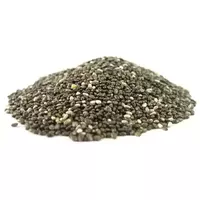Chia seeds (spanish sage)

During the era of Great Geographical Discoveries, Spanish conquistadors actively developed new territories, including exploring the American continent. Thanks to the Spaniards, many food products, as well as spices and spices, appeared in the European culinary tradition. Chia seeds (Spanish sage) were just among such new and previously unknown products in Europe that have long been used in cooking by the indigenous people of South America.
It is worth noting that due to the natural properties of chia seeds (Spanish sage), the plant is used not only in cooking, but also in folk medicine. The plant Chia bela or Salvia hispanica belongs to the genus Sage, hence the second name, as well as the family Yasnotkovy. The homeland of chia is considered the territory of modern Mexico.
In addition, the plant grows in Guatemala, as well as Ecuador, Australia, Bolivia and Argentina. It is noteworthy that chia white chooses high-altitude territories for growth, which are located at an altitude of 2600 meters at sea level. Spanish sage is a plant that reaches one meter in height, blooms with crimson, sometimes white inflorescences.
Chia (Spanish sage) seeds are oval in size, which do not exceed in diameter and one millimeter. Chia seeds (Spanish sage) can differ in color. There are seeds of chia white, gray, as well as black. In addition, an original pattern can be found on the surface of chia seeds. The beneficial properties of chia seeds (Spanish sage) are due to the chemical composition, which makes both vitamins and other compounds that are certainly useful for the human body.
Chia seeds (Spanish sage) are enriched with vitamins of group A, B, C, as well as K and PP. In addition, macro- and trace elements such as potassium, selenium, zinc, phosphorus, magnesium, iron, as well as calcium and copper are present in the composition of chia seeds. It is worth emphasizing that chia seeds are distinguished by a fairly high nutritional value.
The average caloric content of chia seeds (Spanish sage) is at 486 Kcal, which are per 100 grams. Quite high indicators, which indicate the presence of a significant amount of fat in the composition of chia seeds (Spanish sage). The chemical composition of chia seeds is dominated by carbohydrates, the second place is taken by fats. From chia seeds, valuable vegetable oil is obtained, which is also used in cooking and folk medicine.
Historians have found confirmation that chia seeds occupied an important place in the diet of the ancient Aztec civilization. In the chronicles of the monks of the Jesuit Order, notes remained that the chia seeds were second only to corn, amaranth and beans in popularity. Until now, chia seeds, as well as flour and oil obtained on their basis, are actively used in traditional cooking in Mexico, as well as in some countries of Latin America and the Western states of the United States.
chia seeds (Spanish sage) 486 kCal
Energy value of chia seeds (Spanish sage) (Ratio of proteins, fats, carbohydrates - ju):
Squirrels: 16.54 (~ 66 kCal)
Fats: 30.74 g (~ 277 kCal)
Carbohydrates: 42.12 g (~ 168 kCal)
Energy ratio (b | y): 14% | 57% | 35%
 Español
Español Français
Français Português
Português Русский
Русский 简体中文
简体中文 繁體中文
繁體中文 日本語
日本語 한국어
한국어 العربية
العربية Türkçe
Türkçe Қазақ
Қазақ Deutsch
Deutsch Italiano
Italiano Українська
Українська
